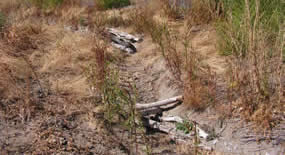The “Waters of the U.S.” (WOTUS) final rule was challenged on the day the rule was set to be implemented on August 28th. The U.S. District Court for the District of North Dakota issued a preliminary injunction against the Environmental Protection Agency (EPA) and the U.S. Army Corps of Engineers, postponing implementation of WOTUS in 13 states. That left the rule in affect in 37 states. On Friday, the U.S. Sixth Circuit Court of Appeals judges voted two to one to issue a temporary nationwide stay preventing implementation of WOTUS in all 50 states. National Cattlemen’s Beef Association Vice President of Government Affairs Colin Woodall said this court ruling is a huge development for the cattle business, because what it stops enforcement and implementation of WOTUS.

“So, to be able to have this entire progress stopped and have that apply to all 50 states is a huge win for us, because right now our producers are not going to have to worry about EPA showing up and knocking on their front door,” Woodall said.
While this is a victory, the battle over WOTUS is not over. Woodall said this is not a permanent solution or the end of this discussion. NCBA needs producers to get engaged in the process.
“You need to make sure you are contacting your members of Congress, especially your two Senators and tell them to act on S. 1140, which is the current legislation that would also engage here,” Woodall said. “Because not only do we have to maintain our pressure on the legal case that we have filed, we also need to maintain our pressure on Congress. Because either one of these could ultimately provide us with the final victory that we are looking for.”
While the U.S. Sixth Circuit Court of Appeals judges and their ruling suggested that EPA might lose on the merits of this case in the court system, it could be a long time before that happens. This case could potentially go to the Supreme Court. That could take five or more years. Woodall said right now we need to make sure that Congress acts on S. 1140. That bill sends WOTUS back to EPA to start over. He said together EPA and agriculture will need to decide what the problem is, the goal of the regulation and come up with a workable solution. Woodall said ultimately agriculture wants some clarification, but this current rule is not the way to do it.
Click here to see more...